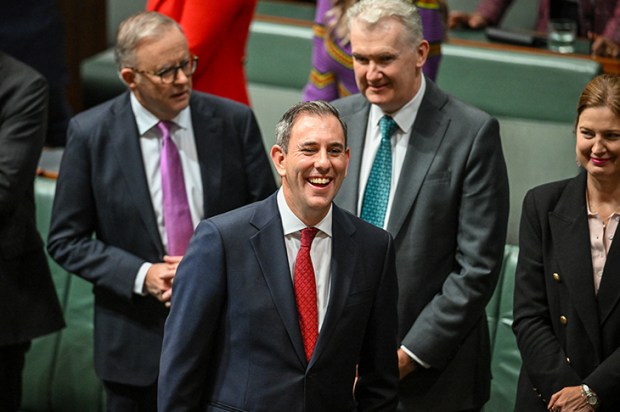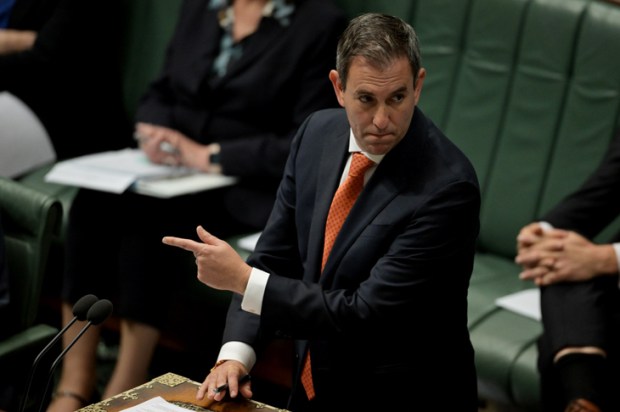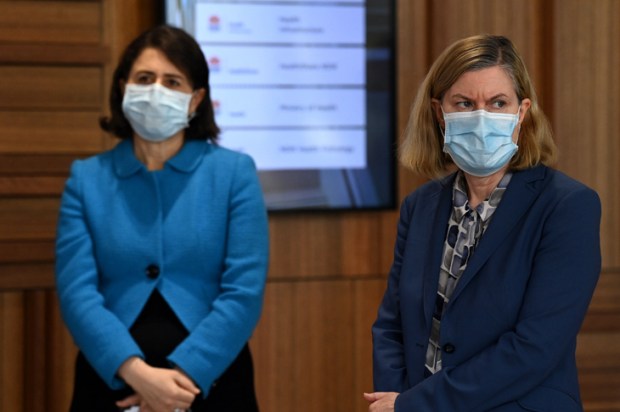American economist Thomas Sowell famously noted that, ‘The first lesson of economics is scarcity: There is never enough of anything to satisfy all those who want it. The first lesson of politics is to disregard the first lesson of economics.’
Given Australia’s mounting fiscal challenges, Australian policymakers perhaps might benefit more from an economics background than a political one. This is underscored by the fact that Treasurer Jim Chalmers holds a doctorate in political science, while Finance Minister Katy Gallagher has a bachelor’s degree in political science and sociology, neither with a focus on economics.
Writing recently for the Australian Financial Review, and without a hint of irony, Phil Coorey separately noted that the Albanese government’s $4.7 billion ‘cheaper childcare’ subsidy has been near completely eroded by fee increases yet the Albanese government is proposing a $16 billion subsidy to reduce student loans.
Taxpayer subsidies to households with children and to home buyers and renters simply push up the cost as the supply is largely fixed. Much the same is true for academia in the short term. Even knowing this, the Albanese government persists with increasing subsidies despite the harm to taxpayers for whom they have complete contempt.
It seems that with an approaching Commonwealth budget and election, the government has plans to ‘cut’ students’ debt by 20 per cent. It is claimed that such a cut would reduce average Help debt liabilities by $5,520. But similar to the government’s recent energy and childcare subsidy announcements, this proposal has the familiar patina of attempted fiscal misdirection.
For the government to cut student debt by 20 per cent does not mean that the debt disappears. It just means that student liabilities simply transform into general taxpayer liabilities which would still need to be repaid through higher income taxes, including by students that this grand scheme purports to help. Taxpayers who never have and never will undertake tertiary education will also be burdened with this cost.
This proposal is on top of the government accepting a recommendation by the Universities Accord to move the point at which repayments start – increasing the income point where student loan repayments start from $54,435 a year to $67,000 a year. Notably, such a change would not reduce, but rather, increase student debt because of the compounding effects of interest on a larger quantum of loan.
Such student debt amelioration proposals are yet another shallow and out of context replication of US policies and politics. Out of context, because unlike US student loans, Australian student loans are income contingent and are only repayable upon borrowers reaching minimum income thresholds.
The structure of student loans in Australia is designed to minimise discouragement to university entry. But before any policy proposals are entertained, it should be first noted that currently, 130,000 student debtors will have $2.2 billion in debt written off unpaid as they reach retirement age. Students who go overseas, choose not to work, or end up in low wage jobs are also exempted from repayment.
Joining the chorus to reduce student loan liabilities is Western Sydney University (WSU) Vice-Chancellor, Professor George Williams, who recently wrote that, ‘We cannot be a community where student debt actively works against people entering and staying in university.’
Although there is no evidence that university enrolments are declining, Williams ascribes much of the blame for high student loan balances to poor Commonwealth policy settings and handily absolves himself and his fellow vice-chancellors for their contribution to student debt levels.
If there is a concern about the high levels of student debt, the only sustainable way to address this issue is to reduce underlying costs, not through subsidies to reduce the costs charged to students undertaking tertiary studies. After all, students only acquire ever greater amounts of debt because the underlying costs of tertiary education keep rising.
What is responsible for the rising costs of tertiary studies? The metastatic growth of university administration and administrators is a significant contributing factor. For instance, in its 2023 annual report, Williams’ WSU reported employee-related expenses totalling $530 million, with 49 per cent allocated to ‘non-academic’ staff. Near half of WSU’s salary expenditures are for non-core teaching and research functions.
Imagine how expensive mortgages would be if 50 per cent of bank salaries were on non-banking activities or how expensive healthcare would be if 50 per cent of salaries were on non-medical activities.
Spread across WSU’s 47,200 students, the cost of ‘non-academic’ salaries averages to approximately $5,500 per student. This is an annual cost which is serendipitously equivalent to the one-off cut proposed by the government.
With limited regard to the broader social and economic consequences, the government and universities seek a perpetual growth in per-student government subsidies, and additionally the number of students attending university.
Many less academically inclined university students would achieve far better income and career outcomes as tradies or by starting businesses. Australia is experiencing a huge shortage of plumbers, electricians, and builders. The case to significantly increase the level of human and financial resources redirected to universities is lacking.
Australia’s tertiary education sector also fails to accept accountability for the quality of their educational products leading to poor outcomes for students and graduates.
Conveniently excluded from the terms of the Competition and Consumer Act, Australian universities can explicitly and implicitly promise students a wonderful future and a strong return on investment. Yet oddly, universities don’t provide a quality guarantee or even after-sales support when such futures fail to materialise. Refunds for poor, Zoom-delivered education? Heaven forbid.
The Commonwealth also does not have clean hands when it comes to levels of student loans. In providing loans, the government is handily not bound by the provisions of the National Consumer Credit Protection Act which requires lenders to properly qualify borrowers to ensure that a loan is for a proper purpose and can be repaid. It’s near impossible for an 18-year-old student to get a credit card, but to get a $50,000 student loan requires little more than a pulse.
If the government is concerned about the levels of student debt, before additional billions of dollars of taxpayer subsidies are thrown at an already bloated sector, a comprehensive review of the architecture of Australia’s tertiary education system is required, including addressing the rising cost of delivering education.
Got something to add? Join the discussion and comment below.
You might disagree with half of it, but you’ll enjoy reading all of it. Try your first month for free, then just $2 a week for the remainder of your first year.













